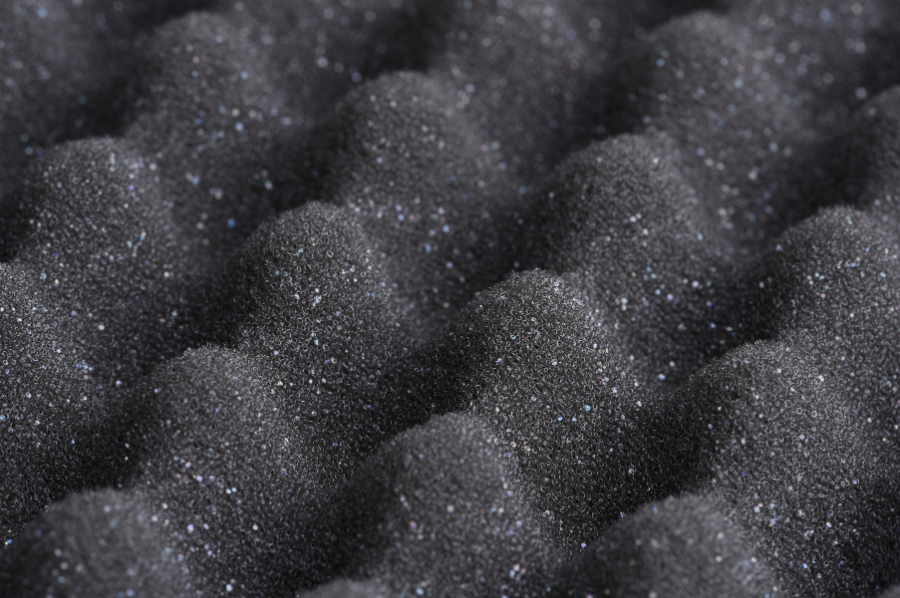- The Polyformes Blog
- What is Foam Conversion? A Guide to Processes, Benefits & Custom Solutions
Foam conversion transforms raw foam into custom packaging, inserts, andcomponents using techniques like CNC routing and die cutting. This guideexplores common materials, processes, and the benefits for businesses needingprecision protective solutions.

If your business uses protective packaging, whether for transport, retail presentation, or industrial use, chances are you've already benefited from foam conversion. This vital process transforms raw foam sheets into precise, functional products designed for protection, insulation, or presentation.
From foam case inserts to end caps, custom packaging, CNC-routed foam parts, and even items like acoustic foam or camping mats — these products are made possible through specialised foam conversion techniques.
The process involves a range of cutting and forming methods, including die cutting, CNC routing, lamination, water jet cutting, and heat bonding, using materials like Plastazote, EVA, and Stratocell. These techniques allow foam to be formed into bespoke shapes and components for virtually any application.
But what exactly is foam conversion? What types of materials are used? And which processes are most suitable for different products?
This guide will cover:
Foam conversion is an essential but often overlooked part of manufacturing, packaging, and product protection across a wide range of industries. Whether it's ensuring delicate electronics arrive safely, enhancing the appearance of luxury goods, or creating custom parts for medical devices, foam conversion makes it possible.
In this guide, we'll explore:
The foam conversion industry uses a wide variety of precision technologies, each suited to different applications and levels of complexity. Some of the most common include:
These methods can be used individually or combined depending on the final product requirements.
Different applications require different types of foam, each with unique properties. The most commonly converted foams include:
| Foam Type | Features | Common Uses |
|---|---|---|
| Polyethylene (PE) | Dense, durable, impact-resistant | Packaging, protective inserts, case lining |
| Polyurethane (PU) | Soft, flexible, good for cushioning | Acoustic panels, padding, general packaging |
| Plastazote® (LDPE/HDPE) | Chemically resistant, lightweight, closed-cell | Medical, aerospace, precision inserts |
| Reticulated Foam | Open-cell, highly porous | Filtration, soundproofing, ventilation |
| Anti-Static / ESD Foam | Dissipates static electricity safely | Electronics packaging, sensitive components |
Each foam type is chosen based on the specific needs of the end product, whether it's strength, flexibility, resistance, or aesthetics.
Custom foam conversion offers significant advantages over using generic or off-the-shelf packaging or components. Here are some key reasons businesses across industries choose to use converted foam:
Tailor-made foam inserts hold products in place, absorb shock, and protect delicate or high-value items from damage during transit or handling.
Pre-cut, organised foam layouts speed up packaging processes, reduce human error, and make inventory management easier.
Converted foam can be shaped precisely to the product, whether it's a surgical tool, drone component, or camera lens.
For retail or client-facing products, precision-cut foam adds professionalism and can enhance brand perception.
Though custom foam may have higher upfront costs, it often leads to long-term savings through reduced damage, returns, and labour.
In sectors like aerospace, medical, and electronics, foam can be converted to meet strict standards for safety, cleanliness, and anti-static properties.
Foam conversion supports a vast range of sectors, including:
As industries evolve, so does foam conversion. Trends include:
Foam conversion is much more than just cutting foam. It's a precise, innovative process that enables better protection, presentation, and performance across virtually every industry.
If your business could benefit from custom foam solutions, it's worth working with a specialist who understands both the materials and the technology.
Polyformes has over 40 years of experience in precision foam conversion. From custom packaging to technical components, our team delivers high-quality solutions tailored to your needs.
Get in touch today for a free consultation or quote.